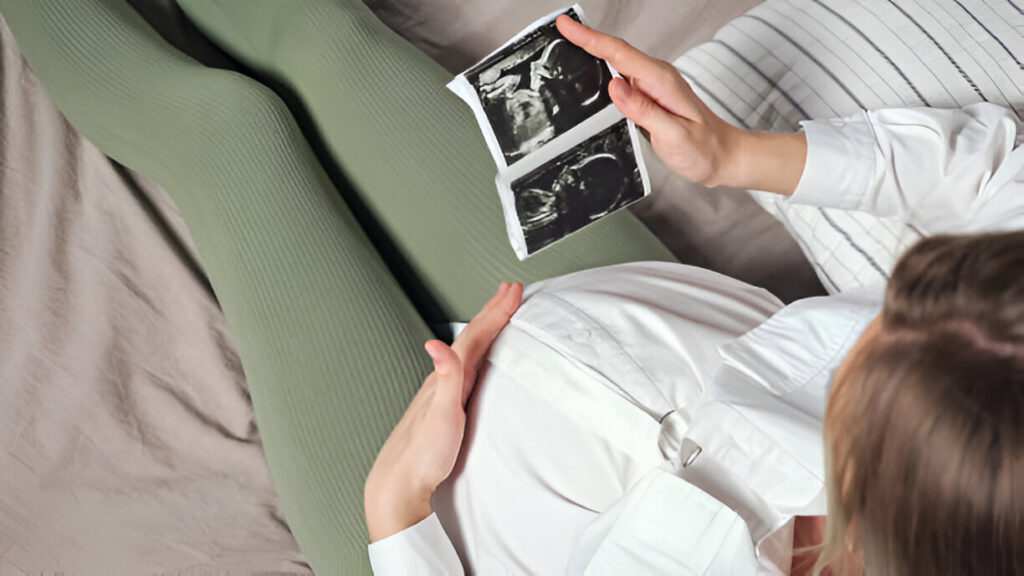Childbirth is a big event for women. It’s full of hope and waiting. But how do different fetal positions affect labor and delivery? Knowing about fetal positions can help moms-to-be get ready. It helps them make choices with their doctors. This info can lower stress and smooth the birthing process. Knowing about fetal positions makes mothers feel in control and confident.
Understanding Fetal Positioning
What is fetal positioning? It’s how the baby sits in the womb, which is related to the birth canal. The best position for birth is the vertex position. This is when the baby’s head is down, facing the mom’s back. But sometimes, babies sit in other ways. This can change how labor goes. Knowing these positions helps plan for possible problems. Healthcare providers can plan better if they know ahead.
Abnormal Fetal Position: What It Means
What is an abnormal fetal position? It’s when the baby isn’t head-down. This includes breech, transverse, or posterior positions. These can complicate labor and lead to longer labors and more interventions. Knowing about these risks is important for a mom’s health. Finding and managing them early can prevent bad outcomes.
Types of Abnormal Fetal Positions
There are many types of abnormal positions. Each affects labor and delivery differently:
- Breech Position: The baby’s feet or buttocks come first. There are three kinds: complete, incomplete, and frank. Each type brings unique challenges. The delivery method often depends on the breech type.
- Transverse Lie: Here, the baby lies sideways. This position is rare but needs a cesarean delivery. It can lead to big problems if not handled right. Good monitoring and planning are key.
- Posterior Position: Also called “sunny-side-up,” this is when the baby’s head is down but facing the mom’s belly. This can make labor longer and more painful. It may also need instruments to help with delivery. Good pain management is important for moms with back labor.
Impact of Breech Position on Labor
Breech positions can make delivery hard. Babies in this position might need delivery by cesarean section. This is because of risks like umbilical cord prolapse or head entrapment. Sometimes, doctors try vaginal breech birth. This decision depends on the mom’s health and the baby’s size. Moms and their healthcare teams should talk about this.
Dealing with Transverse Lie
What if the baby is in a transverse lie? This means the baby is lying across the womb. Vaginal delivery won’t work here. This situation often leads to a cesarean delivery to keep both mom and baby safe. Sometimes, doctors try to turn the baby. This is called an external cephalic version (ECV). It’s not always successful. The success of ECV depends on the baby’s position and the mom’s body.
Challenges of Posterior Position
A posterior position can make labor long and painful. The baby’s head might not fit through the pelvis as easily. Moms may feel more pain in their backs. Changing positions during labor, using a birthing ball, or applying heat or cold to the back can help. Having support from a birthing partner helps a lot. Talking well with the healthcare team is key for managing pain.
Turning the Baby: Techniques and Success Rates
There are ways to try and get the baby into a better position before labor starts:
- External Cephalic Version (ECV): A doctor tries to turn the baby from the outside. It works about half the time but can have risks. It’s done in the hospital in case of problems. Pain relief and relaxation can help it work better.
- Maternal Positioning: Moves like pelvic tilts, swimming, and some yoga poses might help the baby turn. These are often suggested in late pregnancy. Regular practice can help with flexibility and better baby positioning.
- Acupuncture and Moxibustion: These are traditional Chinese medicine methods used to help breech babies turn. Their success varies, and trained pros should do them. Talk to a doctor before trying these. Using these with other methods might help.
Implications for Delivery and Postpartum Recovery
The baby’s position can really affect delivery and recovery after. Cesarean deliveries, often needed for breech and transverse positions, mean a longer recovery time. Moms may feel more pain and take longer to heal. Care after birth is important for recovery and bonding with the baby. Family and healthcare provider support can make recovery better.
Conclusion: Preparing for Different Scenarios
Knowing about the problems with not so normal fetal positions helps moms get ready for labor and delivery. Staying informed and working close with their healthcare providers helps moms have a safer and happier birth experience. Knowing what to expect and having a plan helps a lot when it’s time to welcome a new life. Being prepared and informed gives moms power, making the birth process easier.


